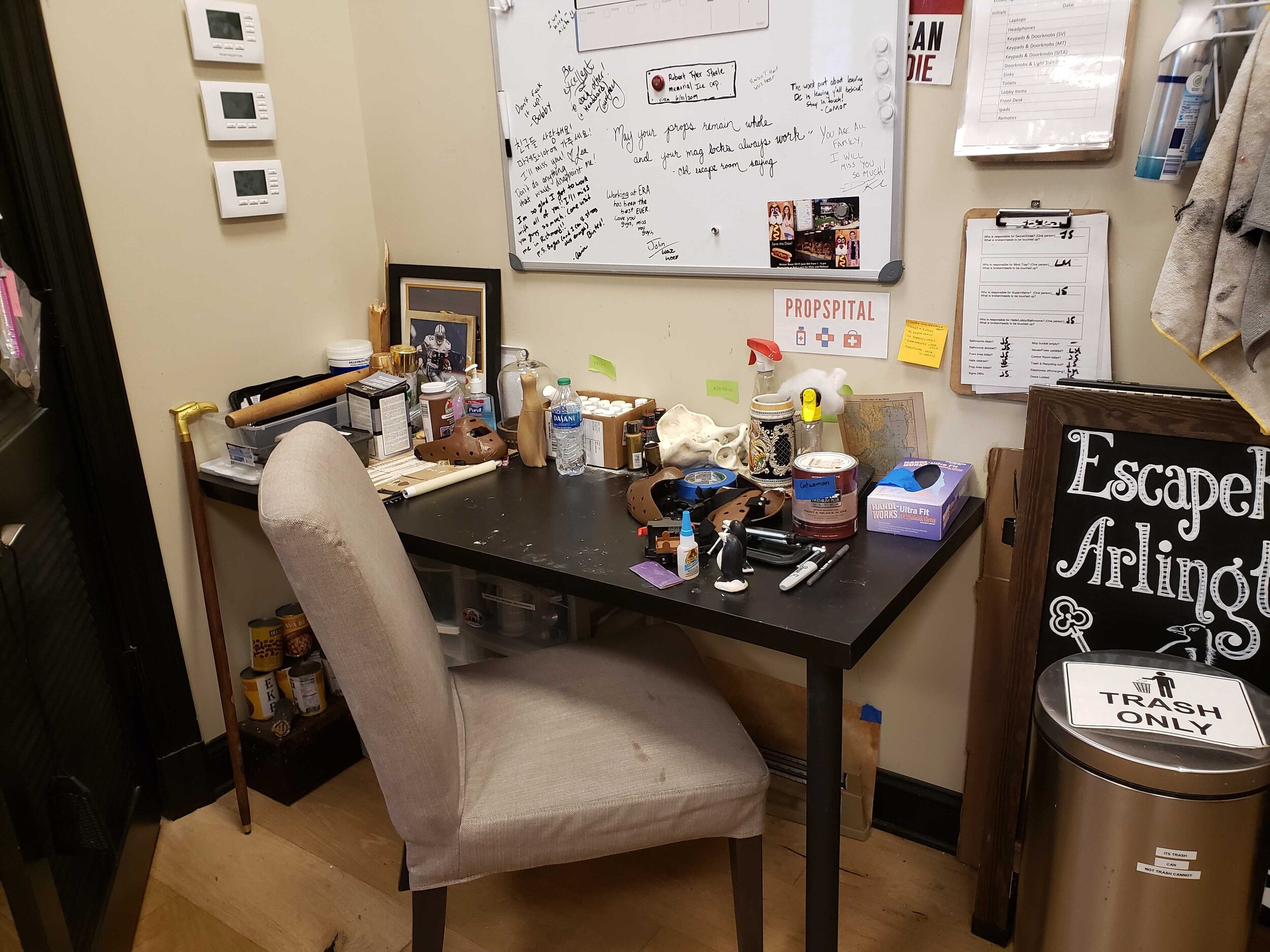A Peek Behind the Curtain - How We Design Our Rooms
Our control room - where the magic happens! It may be Halloween season but the skeletons stay year-round.
Have you ever wondered what goes on in the minds of those who design these escape rooms? Today, we’re here to help you find out! We obviously can’t share all of our secrets, for those are what make us the best escape room in the DC area, but we can give you a little bit of a peek behind the curtain today. Here’s some of the secrets that make us the perfect destination for your next birthday party idea or teambuilding activity.
Our philosophy – what makes us the best
In all forms of art and entertainment, ideas are cheap; good ideas don’t make for good escape rooms. On the other hand, great execution does. From the moment you walk in our doors, we craft everything to feel exquisite and immersive. Everything from the lobby and the music to the construction and the lighting have been carefully considered. Our rooms are the best escape rooms in Arlington because of how immersive the lighting and construction make them feel. Our puzzles are great, of course, but amazing puzzles in a poorly decorated escape room don’t redeem the lack of immersion.
The Design Process
I can’t share too much about our design process, but I will say that everything is thorough. We design everything in-house, and our extremely talented staff’s passion for escape rooms makes our puzzles unique. I believe in collaboration – everyone’s ideas are considered equally, and the wider breadth of staff personal and professional experience, the better. We always have about four room ideas on the backburner with loosely-drafted puzzle and gameplay ideas. The design starts as a conversation about these, and we find the best ones and build from there. Going back to our philosophy above, we aim for puzzles that are elegant. That’s about all I can say about that.
Maintenance
Top Secret Puzzle Design Folder. Shhhhh!
Since we build and design everything in house, we are able to maintain all of our props in house. Prop touch-ups and maintenance are a regular occurrence which keep things looking crisp and perfect for you. The electronics are all built and wired in-house, too, which means we can always quickly fix any electronic problem that may arise. Part of our elegant puzzle design includes puzzles that don’t have too many fiddly parts that are troublesome to keep functional at all times; we strive to make our rooms durable.
Locks? In our escape rooms?
Different escape rooms and enthusiasts have differing opinions on “traditional” locks – those locks that require a key, or a combination of letters or numbers to open. While the presence of a high-school-era padlock can detract from the immersion of an 1800’s setting, we still use them when appropriate, and we find these locks helpful for a variety of reasons.
The most important reason we use traditional locks is that convey a lot of information to the players extremely efficiently. If, in an escape room, you see a locked drawer that has a four-digit combo lock on it, you know a few things instantly. Firstly, you need to get into that drawer. Secondly, you need to look for clues that will give you a four-digit code. Thirdly, you know you’re not supposed to force or break the lock or the drawer – people generally see a lock and they know they’re not supposed to pick it. This third point may sound obvious, but contrast it with a clever object placement puzzle, dexterity puzzle, or the like, and you’ll quickly realize this is important. Fourthly, if the lock requires a series of letters to open, players can generally assume they’re on the right track if a puzzle is giving them a word instead of gibberish.
Placement of the locks also convey a ton of information. If you have a treasure chest that is magnetically locked shut, players may spend most of the game trying to pry it open, not realizing it’s the final objective. If you put six locks on this chest, players have direct motivation and direct feedback of how far along they’re progressing – they’ll know when they need to ask for a clue because they’re falling behind, and they won’t spend time trying to pry open the locked chest.
Where some of the maintenance happens. Emmitt Smith keeps us on-task.
Most of the locks that we use make sense. We have many varieties of keyed locks, which simply require finding a key. Keys are great because they can stick to electromagnetic things. We also use three number, four number, and five number locks. These locks are convenient and obvious; we always emphasize the line which customers are to line the numbers along so that they can more quickly open these. The five number locks have replaceable rings which allow for the use of letters instead; we use these and four-letter locks for word combinations. Letter locks are great because players will know they’re on the right track when they start to spell a word from whatever puzzle they’re working on. Sometimes these letter/number rings can be swapped out for rings with other symbols, such as colors or punctuation marks. Finally, we use directional locks. These locks are great for their uniqueness – they take a series of directional inputs – and are accessibly one-handed, but do require demonstration to know how to reset. We often put something on top of the arrows – colors, symbols, or the like – so make sure to look at the locks before you try them!
Besides what else we post on social media this week, that’s about all I’m allowed to say about our puzzle design. I hope this has given you some insight as to why we’re the best escape room in Northern Virginia for all of your corporate event or birthday party needs. Next time you’re looking for a fun night out with friends, stop by and see our immersive escape rooms!



